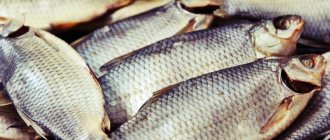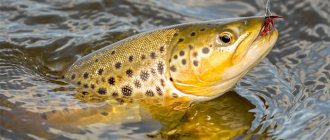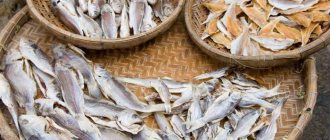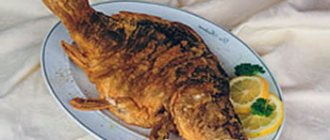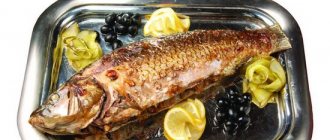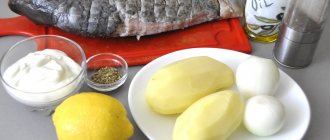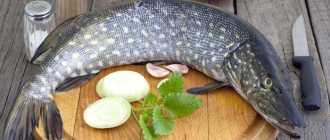Yuri 12/23/2020 166
Saltwater and freshwater fish are a different story in the cookbook. Regular consumption of fish and seafood significantly improves well-being, helps improve health, and is also an excellent prevention of many dangerous diseases.
It is a pity that many people refuse to regularly eat freshwater fish for one reason - excessive bonyness. Indeed, many representatives of the ichthyofauna are distinguished by a large number of small bones, which is why eating fish turns into an unpleasant and sometimes dangerous process. Today we will tell you how to get rid of small bones in fish and cook it so that you can hardly feel them.
Fish without bones

In cooking, sea and river fish are divided according to their bonyness:
- Fish without bones;
- Fish with a small number of small fork bones;
- Bony fish (bony).
In one article it is impossible to give the entire list of river and sea fish without bones, small-bone and bony fish - there are thousands of names. We will name only those types of fish that we often hear about, that we catch, cook or eat; there are no sharks or moray eels. The lists include fish that some people like and others don’t, some that are affordable and some that are expensive, some that are rare and some that are not so rare, and that vary in their degree of usefulness, safety, and taste. To avoid offending anyone, the names of the fish are in alphabetical order.
Fish without bones, or without small bones, are sturgeon, some cod and salmon. It can be river, lake, migratory or sea fish.
Migratory fish are fish that enter the fresh waters of rivers to spawn. Migratory salmon rise upstream in rivers, overcoming any obstacles in their path, spawn, and then slide downstream and die. Migratory sturgeons enter rivers, but do not rise high and return to the sea until the next spawning season. The river eel, on the contrary, goes to sea to spawn. Migratory and semi-anadromous fish can live in both fresh and salt water.
River fish and migratory fish
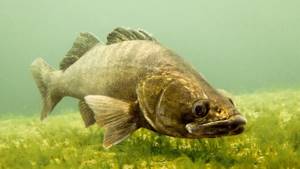
Sturgeon. List of these fish with photos
Sturgeon, sturgeon, is the general name for freshwater sturgeon, anadromous and semi-anadromous fish. This is an osteochondral fish species that can live 50, 100 or more years. Black caviar is a product of sturgeon fish.
- Beluga (the largest freshwater fish of the sturgeon family, listed in the Red Book)
- Kaluga (sturgeon freshwater fish of the beluga genus)
- Russian sturgeon
- Sevruga (sturgeon family, migratory fish)
- Sterlet (freshwater fish of the sturgeon family, grown in ponds and lakes)
- Thorn (sturgeon anadromous fish)
Other river fish without bones - list with photos
- Burbot (freshwater representative of cod)
- River lamprey (jawless predatory fish)
- River eel (migratory fish, spawns in sea water)
River fish with a few small bones:
- Carp (wild carp)
- Catfish (large freshwater predator)
- Pike perch (perch family)
Salmonidae
Salmon, salmon, is the general name for fish of the salmon family, including freshwater inhabitants and migratory ones. Red caviar is a delicacy, the roe of salmon fish.
- Pink salmon (genus of Pacific salmon)
- Chum salmon (salmon fish)
- Salmon (Atlantic salmon, lake salmon)
- Whitefish (salmon, there are many varieties of whitefish)
- Taimen (freshwater fish, the largest representative of salmon, listed in the Red Book)
- Trout (several species of fish of the salmon family that live in fresh water)
Sea fish

In parentheses are notes and key features. List of boneless (or almost boneless) sea fish:
- Vomer (selena, moonfish)
- Yellowtail, or lakedra (mackerel fish)
- Catfish (sea wolf, perciformes)
- Flounder (flat bottom fish)
- Mullet (there are freshwater representatives)
- Icefish (white pike)
- Mackerel (mackerel fish)
- Macrurus (rattail, deep-sea cod-like fish)
- Pollock (cod fish)
- Sea bream (perciform fish)
- Sea bass (Scarpenidae family)
- Conger eel (passively poisonous fish)
- Sole sole (European sole, flounder fish)
- Navaga (Far Eastern navaga, cod family)
- Halibut (flounder)
- Haddock (cod family)
- Seabass (from sea bass, laurel, koykan, sea wolf, sea pike perch, etc.)
- Mackerel (mackerel family, order Perciformes)
- Horse mackerel (different types of fish from the horse mackerel family)
- Tuna (tunas are a group of fish of the mackerel family)
- Hake (hake, cod-like fish)
Fish without scales
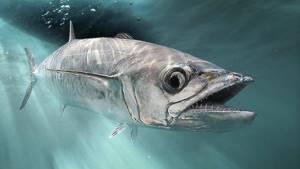
What fish has no scales? Depending on the species, fish have five different types of scales. Most fish have scales, some are partially scaled, and a few fish have no scales.
Some fish species are mistaken for fish without scales. An example is sharks and rays. Indeed, sharks and rays do not have lamellar scales, since they are a different structure called placoid scales - rhombic plates with a spine protruding outwards. Below is a list of edible fish without scales in whole or in part.
Sea fish without scales:
- Mackerel (spines present on the lateral line)
- Sea eel
River fish without scales:
- Naked carp (mirror carp is partially covered with large scales)
- Burbot
- Sturgeon (scales present on the tail)
- river eel
- Catfish (catfish are considered scaleless, but they have very small, dense scales that form a covering similar to skin).
Tench is sometimes mistaken for a fish without scales, but it has them. Tench have rather small and dense scales, covered with a dense layer of mucus, so the cover looks like skin.
Cutting river and sea fish
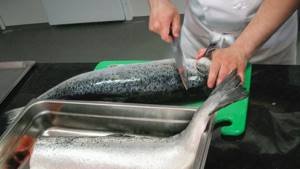
Before cutting the fish, it is prepared - thawing (if frozen) and soaking. Cutting a fish involves removing everything unnecessary - scales, entrails, skin, head, fins and bones. At the same time, according to the processing method, fish are divided into groups: scaly, scaleless and sturgeon. Fish with very small scales (catfish, navaga) are cut like fish without scales.
When preparing frozen fish for cutting and cooking, it is useful to know the following points:
- The faster frozen fish thaws, the better the taste of the meat is preserved and the juicier it will be.
- Scaly and scaleless fish are thawed in lightly salted water for two to five hours, depending on size.
- Sturgeon, catfish, frozen fillets are thawed in air at room temperature.
- Mackerel, navaga, hake, mackerel - do not thaw, they are easier to cut frozen.
Different types, methods and schemes for the primary cutting of different fish are demonstrated in the video below. Cutting river fish (perch, pike, burbot, pike perch, bream) and sea fish, cutting salmon and sturgeon:
Preparing fish and frying
The process of preparing fish and frying it is as follows:
- Clean and gut small and medium-sized fish;
- We make transverse cuts on the sides of the fish, in increments of 5-8 mm, deep to the ridge;
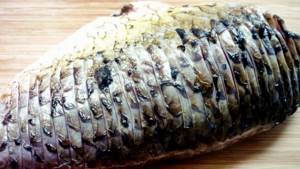
- Salt, pepper, add spices;
- Dip the fish in flour and place in a frying pan with heated oil;
- Fry on both sides until golden brown.
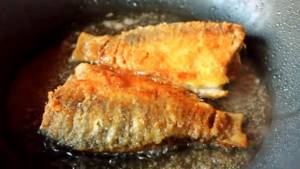
In order for small bones to undergo the required temperature treatment, the fish must be cooked over a fire in which it does not simmer, but actually fries. Small seeds dissolve, and the remaining ones become edible. Delicious fried boneless fish is ready!
Which fish is tastier and healthier?
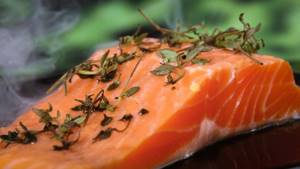
We looked at many types of fish, some with more bones and others with fewer bones. We found out that there is fish without bones and scales. But is this enough to judge the culinary value of fish? Not, no so much.
In addition to the number of small bones, the meat of different fish differs in many properties: taste, fat content, amount of protein, presence of useful minerals and vitamins. Availability and price of fish are also important.
Let's find out which fish is the most delicious and healthy, which fish you should stay away from, and what the cost of fish depends on.
The most delicious fish
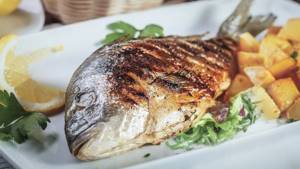
The most delicious fish is the fish that you personally like best. There is an opinion that there is no such thing as tasteless fish - only improperly prepared fish. The following fish are generally recognized as tasty: salmon, sturgeon, tuna, and luvar. But some people will prefer grilled bream, fried pike perch or dried sabrefish to all these delicious fish.
The healthiest fish

The healthiest fish is the one whose meat contains more omega-3 and omega-6 fatty acids, which are simply necessary for the body. This means that these are “fatty” fish - tuna, halibut, mackerel, salmon. Let's arrange them in descending order by the amount of healthy fats:
- Wild salmon (any wild fish from the salmon family)
- Mackerel
- Cod
- Halibut
- Rainbow trout
- Sardines
- Herring
- Tuna
Despite the fact that tuna is often called the healthiest fish, it is at the end of the list of healthiest fish. This is because we used an objective approach and facts. The healthiest fish in terms of omega-3 content is wild salmon. It is the wild one, as well as the one grown in captivity, that often turns out to be harmful due to the feed additives that are used when growing it on fish farms. Just one hundred grams of wild salmon meat contains the daily requirement of omega-3 fatty acids.
Dietary fish
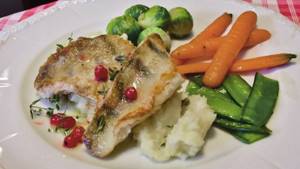
In general, any fish is considered dietary. A more dietary fish is one whose meat contains fewer calories and fat. Among river fish, these are pike, perch, and pike perch.
Marine dietary fish are hake, pollock and cod. It should be borne in mind that the dietary properties of fish largely depend on the method of its preparation. If you fry or smoke fish, the dietary properties of the fish will be lost. The most suitable methods for preparing dietary fish dishes are boiling or steaming.
The safest fish

The safety of fish depends on how you look at it. There are fish that you can eat even raw without worrying about the dangers of raw meat. The safest river fish can be considered fish from cold, clean and transparent fast rivers. However, sea fish is safer.
Among sea fish, tuna stands out in terms of safety. Tuna meat does not contain parasites, is hypoallergenic, and does not contain small bones. Tuna is often introduced as complementary food to young children as young as one year old.
Among river fish, the most resistant to the parasite is pike perch. Pike perch can be considered a safe fish.
At the same time, it should be remembered that there are no completely safe products suitable for absolutely everyone. The safety of fish largely depends on the method of preparation.
The most harmful and dangerous fish

If there is the most useful fish, it is logical to assume that there is also the most harmful fish. And this is by no means a poisonous fugu fish. Telapia and pangasius, for example, often live and breed in simply terrible conditions. They normally exist and multiply almost in sewage waters where they feed on any waste from these waters. Just don't buy telapia of dubious origin.
It is more difficult with semi-finished fish products made from the meat of quite noble fish. To give it a fresh look, dyes are added to the fish meat, and for weight, it is pumped with substances that retain large amounts of water. I don’t even want to talk about chemicals that dissolve bones in fillets.
An unscrupulous manufacturer can make any fish harmful and dangerous.
The most expensive and cheapest fish
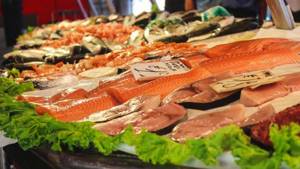
The most expensive fish is not found on store shelves, and not at all because no one can afford it. These are rare species of fish, specially supplied only to restaurants. These include pufferfish, beluga and its caviar, kaluga and some other sturgeon. Tuna is also an expensive type of fish. People have learned to raise salmon and sturgeon, so the price for them has become quite affordable for many.
The cheapest fish in stores are fresh frozen hake, pollock, halibut, haddock, cod and the like. River fish that is not exported can be cheaper than sea fish.
The price of fish is not directly related to the value of fish as a food product, its taste and usefulness. It depends more on demand on the global and local markets, the ability to satisfy this demand, and other factors not related to the quality of fish.
How to remove all the bones from the belly of a fish?
This method is used if you want to stuff the fish with its head and tail removed.
When cutting small, round fish, remove the entrails first. This is done by cutting along the belly and removing the intestines of the fish.
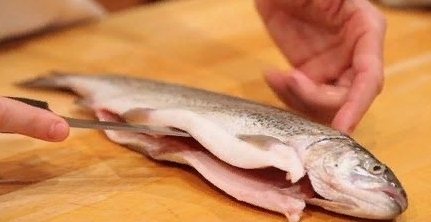
Once the fish is cleaned and rinsed, take the fish, place it on a clean board and cut off the head. Do this by cutting through the head just behind the gills and cutting with a large, fast stroke.
Do the same at the tail section and remove the tail. Also remove the fins.
Then open the belly of the fish and place it on a flat surface, skin side up. Use your fingers to press down along the spine to loosen it.
Turn the fish over so that the skin touches the board, and then try to lift the entire spine and rib cage in one piece with one hand while carefully freeing the bones with a thin, sharp knife with the other. Hold the knife parallel to the board, sliding the knife under the bones.
Once the spine and rib cage are removed, check for any bones and remove them with tweezers.
Bony (bony) fish

Small and large fish of the same species have approximately the same number of small bones, but in large fish the fork bones are larger and more noticeable. It is much easier to select bones from large fish. Almost all small river fish are very bony - these are perch, pike, bream, roach, crucian carp, etc.
Why don't people like bony fish? Bony fish, or as they say - “bony”, does not mean that it is tasteless. It can be very tasty, but picking small bones from the fish instead of eating it is a dubious pleasure. In addition, there is a risk that a small fish bone may get stuck in the throat. How to cook bony fish? What to do if a bone is stuck in your throat? We will answer these questions too.
How to cook crucian carp
- 1 kg fresh crucian carp
- 1 tsp. lemon juice
- vegetable oil for frying
- flour
- salt pepper
- Clean the fish from scales and gut it. Cut off the heads and wash the carcasses thoroughly.
- Using a sharp knife, make transverse cuts 3–4 mm wide on each side of the fish, without cutting the backbone.
- Pour lemon juice over the fish, season with pepper, salt and leave to marinate for 15 minutes.
- Roll pickled crucian carp in flour and fry until golden brown in a deep frying pan over medium heat, cover with a lid.
Watch the video for details on the cooking process.
The bones in fish prepared using this method soften during frying and therefore cannot be felt. You won't forget to share this trick with your friends, will you? Try to cook fish according to this recipe, we hope you like it!
Did you like the article? Subscribe to the channel to stay up to date with the most interesting materials
This fish is considered very tasty and filling. This is due to the large amount of unsaturated acids, which are very beneficial for health. Cooking delicious bream is very simple, because the meat is quite fatty and incredibly aromatic. The first association that arises when talking about bream is dried fish.
But those who understand cooking know how to cook bream in a more profitable way. If we talk about the disadvantages, then very often the bony nature of this type of fish discourages the preparation of this type of fish.
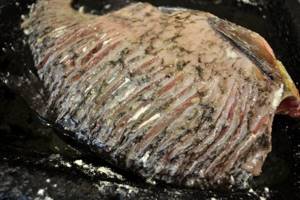
- How to cook delicious bream + the secret of fighting bones
- Bream in a slow cooker
- What can you cook from bream?
- Small tricks
- The main secret of boneless bream
- Additional subtleties of frying
- What to do with very bony fish. A way that will allow even children to eat it
- How to cook bony fish
- How to cut and cook bream without feeling the bones
- Secrets of baking bream in the oven: myths and reality
- Stuffed bream baked in the oven
- Recipe for juicy baked bream with vegetables in the oven in foil
Frying small fish without bones
Heat treatment of fish softens fish bones. Vegetable oil, unlike water, warms up significantly above 100 degrees. Under the influence of this temperature, small bones in boiling oil almost completely dissolve. It turns out to be fish without bones.
This way you can fry fish that are not very suitable for frying due to the large number of small bones - medium-sized roach, bream, silver bream, ide and similar fish. Crucian carp is traditionally fried, and transverse cuts on the sides, definitely during the frying process, rid the crucian carp of many fork bones.
See what it looks like:
How to cook fish to get rid of bones
The best option is to use a multicooker for this purpose. But, since not everyone has it on hand, you can prepare it in another way. This method is called “carbing”. Its essence lies in double, total shredding of the carcass. Diagonal cuts along the entire length of the body in both directions allow you to obtain not only a beautiful pattern, but also soften even the largest bones.
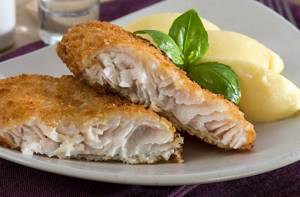
Fried pike perch fillet
Some housewives make multiple cuts on the surface of the fish and subject it to prolonged heat treatment in the oven, saucepan, slow cooker or frying pan. Prolonged exposure to high temperatures softens the bones and maintains the relative integrity of the carcass.
Bones are also easy to separate from dried or dried fish. Therefore, this cooking method can be used as an alternative.
As you can see, there are many ways to make freshwater fish dishes not only tasty, but also safe. Come to us at Sazanya Bay, and our huntsmen will tell you a couple more secrets that will help you properly cook too-bony fish.
